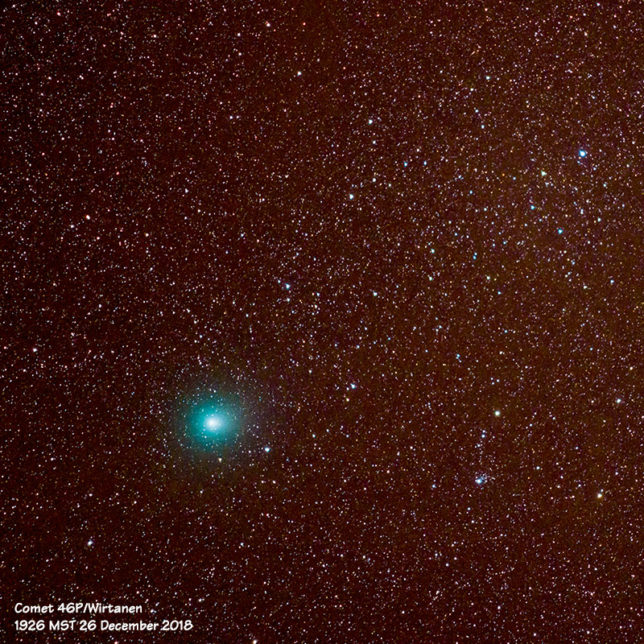Comet 46P/Wirtanen has already made its closest approach to both Earth and Sun and is now moving away. Yet it remains high in the sky making it an easy night-sky object if you are in a very dark location. It then appears as a full moon-sized smudge in the sky.

The full moon is now waning and rising later so that there are a few hours in which to observe the comet without the interference of moon light. We had one night without moon interference and without clouds so I took advantage.
Instead of taking multiple images and stacking I shot single images of 1, 2, and 3-minute exposure. Should have been easy. But there was a gusty wind blowing so that the camera and tripod was sometimes jostled resulting in streaky stars. And I had trouble focusing the telephoto lens I wanted to use (Nikon 70-300mm). Frustrated and cold, I grabbed my legacy zoom lens (Nikon 80-200mm AIS Manual Focus). This one is easy to focus on stars. Just rotate the focus ring all the way until it stops.
That’s the thing about some legacy manual focus lenses. They can be easier to focus than modern auto focus lenses in the dark so I keep several very old lenses around for that reason.